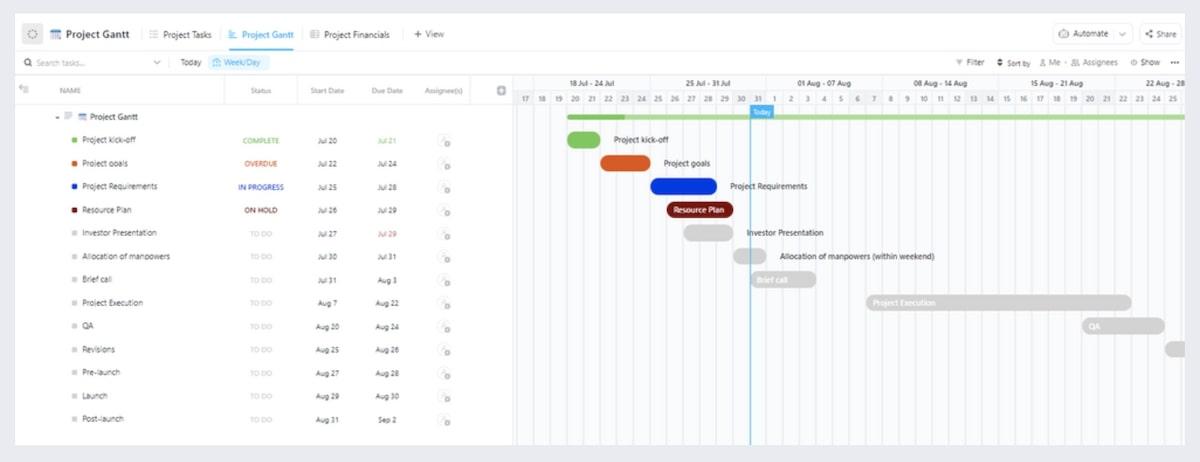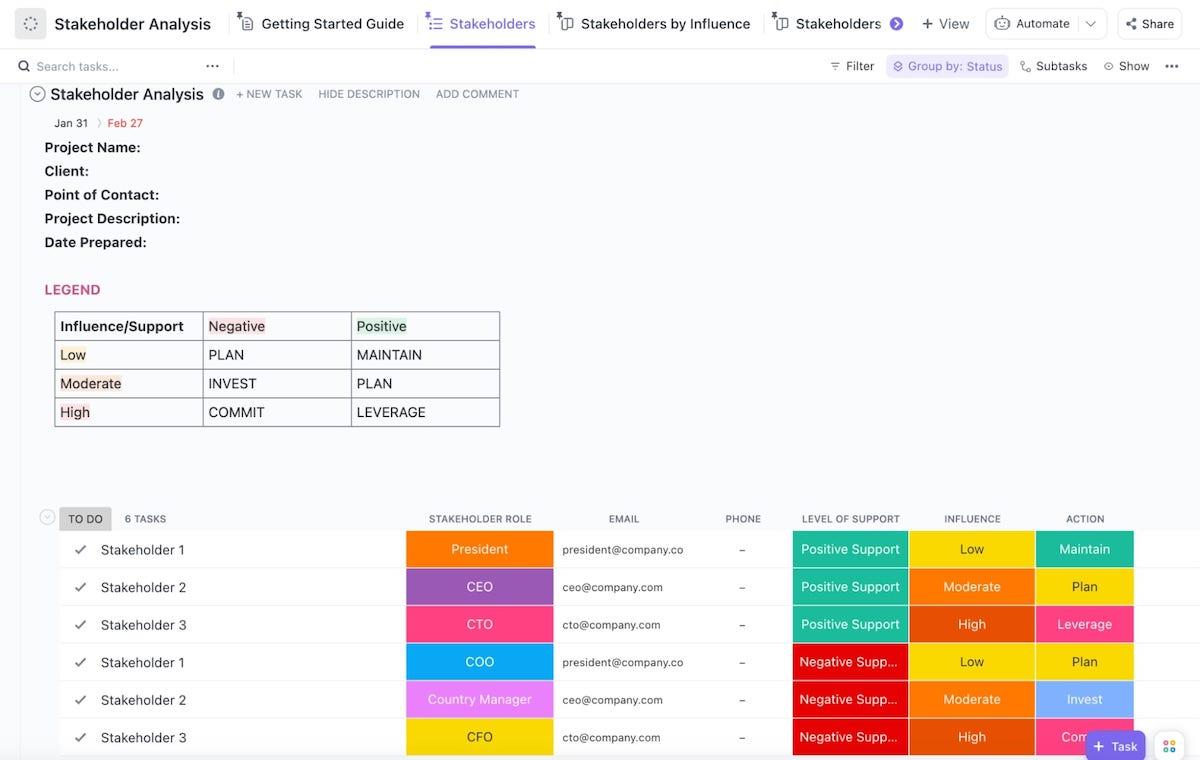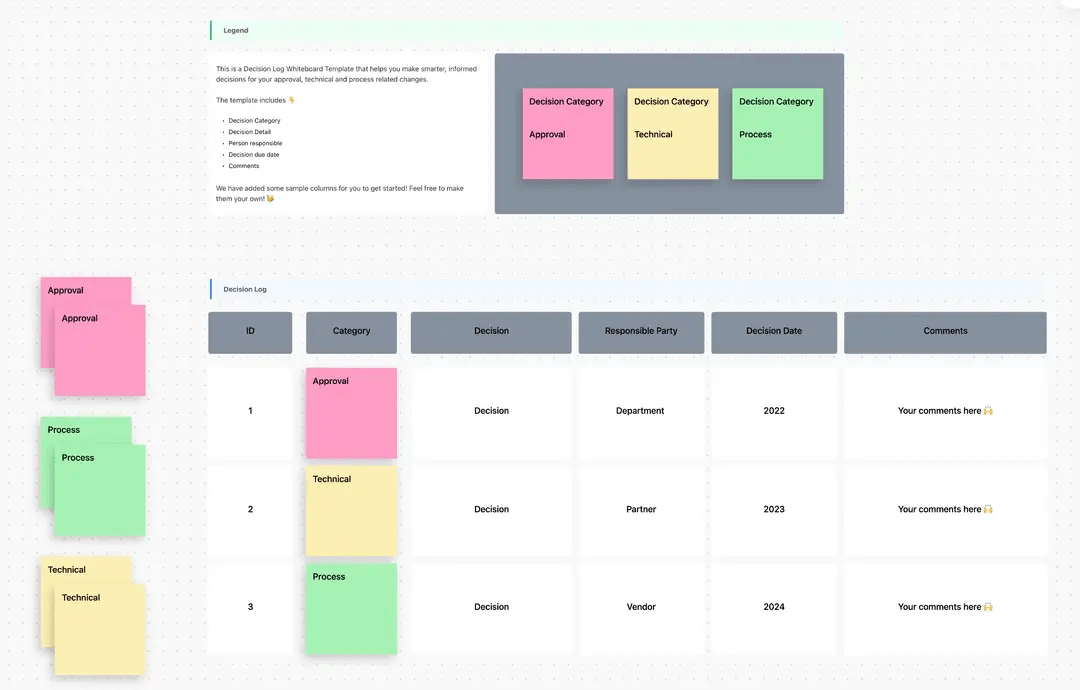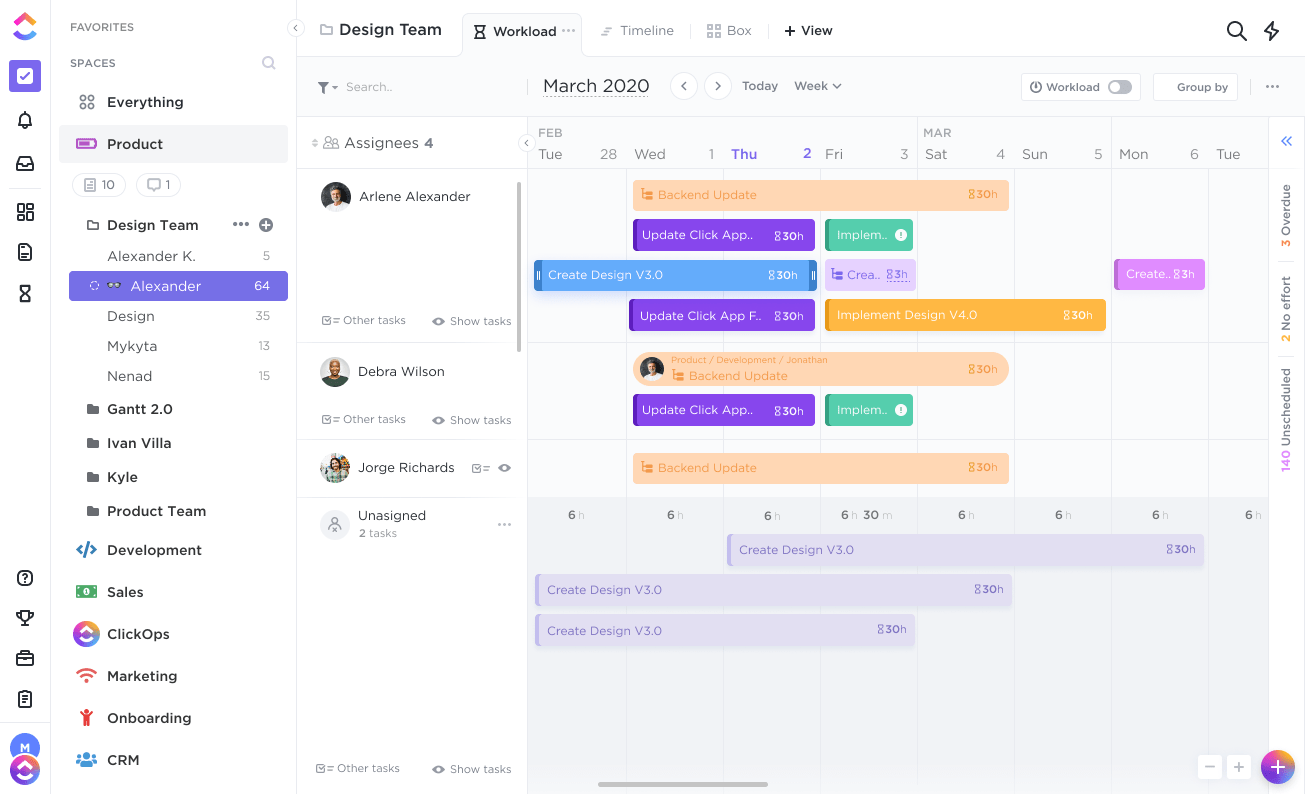

If you’ve ever managed a project, you probably know how stressful the job can get. As a project manager, you always have your plate full of high-stakes problem-solving and decision-making duties.
Now imagine doing that for a whole program—which is nothing but a large set of active projects. The complexities are amplified, stakeholders multiplied, and the decision-making process is much more critical and cognitively demanding.
That’s where a program governance framework comes to the rescue. 🥰
It’s a body of governance mechanisms that guide leaders and senior managers handling multiple projects to oversee the overall program’s success. The goal is to minimize program risks and ensure all project deliverables are aligned.
In this article, we will discuss the various concepts around program governance structures to boost organizational efficiency, minimize conflict, and reduce process-related risks. We’ll cover:
- Program governance models
- Specific program roles within organizational governance
- Steps to establish a solid program governance structure
- What Is Program Governance?
- Relationship Between Program Governance and Program Management
- Different Types of Program Governance Models
- How to Establish a Program Governance Structure: 7 Steps
- Step 1: Identify key stakeholders
- Step 2: Set up your governance board and define individual roles and responsibilities
- Step 3: Define program standards
- Step 4: Establish governance processes and standard operating procedures (SOPs)
- Step 5: Align the framework with organizational governance and strategy
- Step 6: Provide an escalation mechanism
- Step 7: Share the structure with all stakeholders
What Is Program Governance?
A program refers to a group of projects that collectively try to achieve a shared goal. The program in itself is treated as an individual entity within an organization, so it needs the vision to operate within the business’s overarching goals.
That’s where program governance comes in. It refers to the formulation, implementation, and following of the best practices and structures that are common for all the projects within a program.
From every project’s scope and intended outcomes to program risks and constraints, program governance gives you a foundational framework to address everyday issues, as well as help the key stakeholders know what they’re committing to. 🤝
Typically, a program governance model encompasses five aspects:
- Scope: The nature and scope of the projects covered under the governance model
- Success criteria: The conditions that must be met before a project is considered successful
- Execution plan or roadmap: The processes and policies that should be followed while executing projects
- Roles and chain of command: Roles and duties of each member in the governance board and the appointment process for new members
- Escalation mechanism: When and how are the project issues to be escalated for resolution by the governance board
Program governance model: Core benefits
A program governance model brings consistency, process standardization, and predictability to the outcomes, communications, and decision-making. This minimizes the risk of program failure while increasing the efficiency of each project and the individual project team.
Some other core benefits of program governance include:
- Optimized resource allocation: Helps ensure that each project is managed effectively and gets a fair share of resources necessary for its completion
- Improved stakeholder engagement: Provides a framework for deeper and more streamlined engagement between all stakeholders
- Better project accountability tracking: In terms of project management, it creates a mechanism to hold each team member accountable for their share of duties
Program components and roles
Just as a government makes policies for a nation, a program governance model is put in place by the company’s program governance board or the steering committee. This board may consist of the program sponsor, the individual project sponsor, senior managers of the organization, and client representatives, among others.
Other important program components and roles include:
- Program management team: Includes key leaders and portfolio managers who provide timely information to the board and coordinate as needed
- Program management office: This can be a specific department within the organization that handles program-related admin work and conducts periodic health checks in terms of project deliverables
- Key documentation: Refers to the project charter, program rules, and other documented information that facilitates program activities
Relationship Between Program Governance and Program Management
The road to better program management goes through robust program governance. The relationship between the two concepts is more like a map and a journey.
Just as a map shows the route to reach a certain destination along with expected time and alternate emergency routes, program governance outlines the path to managing a program and handling risks while ticking off its objectives. ✅
Bonus tip: Looking for an easy way to oversee all your programs? You can use the ClickUp Program Management Template to track and manage the progress of your program through various stages in its built-in Gantt view. And it’s totally free!

Different Types of Program Governance Models
There are three main types of program governance models or frameworks, each trying to organize your resources and teams differently.
1. Functional governance framework
In this type of governance model, the resources and people are organized around the functions of their departments. There’s a designated function head to manage the operations within each department that has a definitive role in the program.
A project manager has limited authority over resources and people in this type of governance model as most of the decision-making duties rest with functional heads. If the manager needs additional resources for a certain function, they must request it from the relevant head. 🏬
The major advantage of functional governance is that it allows for specialization. Function heads enjoy complete control over processes and intra-departmental information, helping them build direct accountability for tasks within the governance framework.
And further up the hierarchy, the department head is able to respond to queries and suggest resource plans with greater confidence.
2. Project governance framework
This governance model organizes resources and people around projects rather than functions. The authority to call the shots rests with the project manager, and they assign the tasks to various team members, including the function heads (if the roles exist).
If a project is on the verge of being delayed, the project manager can use their wisdom to assign additional resources from any department, thanks to a cross-collaborative setup.
The project governance model allows for greater autonomy at the project level and speeds up the execution of project workflows.
However, it can make specialization difficult as function heads may not always have an idea of when a project is going to require additional resources. A poorly organized framework can lead to uninvested department heads who may not have a clear picture of future resource requirements, which increases the risk of bottlenecks.
3. Matrix governance framework
The matrix governance model harnesses the capabilities of both functional as well as project-based governance and is often preferred by foresighted managers in large, cross-functional teams.
In this program governance framework, resources and people belong to their respective departments, and there’s a function head managing them. The difference here is that there’s also a project or program manager coordinating between various function heads and stakeholders.
The extent of authority the coordinator has in a matrix model is subjective. In weaker matrix models, we see the decision-making authority skewed toward the department heads, while in stronger models, it’s the project manager who has a greater say in decisions.
It’s best to aim for a balanced matrix governance model, where the project managers and function heads share equal authority and ownership over decisions. And in the event of project management challenges or conflicts, an escalation mechanism kicks in where either the project manager or the function head escalates the matter to the project and program governance board. The board hears both parties before making the final call.
How to Establish a Program Governance Structure: 7 Steps
Establishing a program governance structure is a seven-step process for most organizations. But to implement it properly, you need the support of a quality project management software tool like ClickUp.
Project management tools serve as a centralized hub of all project info and processes, making it easy for any program manager to monitor everything. Plus, the software also plays a crucial role in testing the effectiveness of any project or program governance framework beforehand.
Let’s explore all the steps to implementing the framework—we’ve also demonstrated some handy functionalities within ClickUp to simplify the process. 🌝
Step 1: Identify key stakeholders
The first step is to identify all the stakeholders within a program. Anyone who is impacted by the program is a stakeholder, and it’s important to identify them as well as the level of influence or interest they have. Some major stakeholders may include the program sponsor and manager, as well as end users, business owners, project managers, regulators, and external partners.
Grouping project stakeholders together will help you plan your priorities and communication processes more clearly. The ClickUp Stakeholder Analysis Template is a good starting point to identify, group, and analyze program stakeholders and their influence on projects within the program, as well as document what their expected benefits are. 📒

Step 2: Set up your governance board and define individual roles and responsibilities
Once you’ve defined all the stakeholders, you need to put together your main program board. The number of members and individual roles and responsibilities depend on the complexity of your portfolio.
You may want to build different layers of governance bodies, like a steering committee to work on the program strategy, a governance board to supervise the implementation of best practices, and a dedicated program team for executive tasks.
The key is to ensure that the members are not overwhelmed with their responsibilities, which would affect their working style and ability to discharge their duties properly.
Tip: You can use the ClickUp RACI (Responsible, Accountable, Consulted, and Informed) Planning Template to define roles within your program board.
Step 3: Define program standards
Programs adhere to specific standards throughout their lifecycle. These standards are often defined by the program sponsors or clients. Still, in many cases, they may also be mandated by government or industry regulations. When building a program governance model, it’s necessary for the governance body to define and document them.
The standards should touch upon all aspects of a program—from communication and reporting to output control. Some program standards you can document include:
- Program scope
- Budgets for different projects within the program
- Risk mitigation strategies
- Program management tools
- Sign-off criteria
- Metrics for program performance
Once your program governance body has finalized these standards, document them in one place using ClickUp Docs. It’s a robust documentation feature built into the ClickUp productivity suite to help you and your project team members create documents collaboratively. All Docs are stored within dedicated project spaces for easy retrieval.

Looking for a standardized format to document program initiation? The ClickUp Program Proposal Template is your go-to. It includes all the necessary fields and visualizations to help you note down your program’s key objectives, task priorities, and resource allocation policies using industry-standard language.

Step 4: Establish governance processes and standard operating procedures (SOPs)
Once your governance body has defined the standards, start devising governance processes to ensure they’re implemented at an operational level. The processes drafted should cover planning, execution, monitoring, and reporting. Some of the process areas you may want to address at this stage include:
- Audit
- Review
- Approval workflows
- Decision-making
This can be the trickiest step as you must consider process flows across your organization to develop balanced SOPs. That’s why large teams often use ClickUp Whiteboards to visualize process maps using flowcharts, activity maps, and other visualizations. Each Whiteboard is sharable and collaboration-friendly—your teammates can share their inputs and work on process mapping together in real time.

Furthermore, there are many impressive program management Whiteboard templates in the ClickUp library that help with program governance modeling. For instance, the ClickUp Decision Log Template can be used to maintain a log of all the decisions taken by team members and the governance board. It can store all the information like decision categories, issues, and other trackable details.

Once you’ve formulated your processes, ClickUp Automations can help you automate the repetitive parts of your workflow. You can automate admin tasks like setting up or updating project statuses, task hand-offs, notifications, and reminders. Your executive team will thank you for it. 😀
Step 5: Align the framework with organizational governance and strategy
Your program governance processes should align with your organization’s governance policies and strategies. Without this alignment, your program may continuously face problems due to internal conflicts.
For instance, if your organization’s governance structure puts a huge chunk of the authority in the hands of function heads, then implementing a matrix governance model may not work out for the company. The teams, especially the project manager and function heads, will constantly be at odds, hurting productivity, program progress, and even your work culture.
You can appoint a reviewer at this stage to check the feasibility of your governance policy. If you’re using ClickUp, the reviewer can use Comments or Proofing to point out inconsistencies in your model.
Step 6: Provide an escalation mechanism
An escalation mechanism is all about having the necessary hierarchy channels lined with managers with the appropriate authority to make core decisions. The idea is to have a chain of command to address issues and risks that create problems down the hierarchy.
That escalation mechanism should be systematic, allowing for the submission of necessary information and files and providing a way to communicate solutions quickly.
ClickUp can help you build a robust escalation mechanism into your program governance model. You can create an escalation form using ClickUp Forms that team members can submit to escalate an issue with relevant details like stakeholders involved, differences of opinions, the potential impact of each approach, etc. Each submission becomes a task assigned to the program board member who can resolve the issue.
Board members can also use ClickUp’s 15+ views, including List, Board, and Timeline views, to analyze the escalated issue. For instance, they can use the List view to sort escalation tasks based on priority and quickly decide which matter needs to be resolved first.
ClickUp also offers a live ClickUp Chat feature for instant communication about your program issues or any other urgent discussion—you can talk to an individual or an entire team without having to write formal emails. You can even organize a Zoom meeting from within the ClickUp workspace, thanks to a dedicated Zoom integration.

Similarly, the Timeline view can help the program manager see the projects that are running behind schedule and take remedial measures to bring them back on track. Project managers can use this view to monitor the entire project management lifecycle for strategic decision-making.

Step 7: Share the structure with all stakeholders
Once you’ve put your program governance structure in place, share it with all stakeholders so they can grasp the new policies and best practices.
This step is among the most crucial ones because how you communicate and share information about your program governance structure plays a major role in the error-free execution of projects down the line. It also opens a channel of feedback from stakeholders impacted by the changes.
Deliver Program Governance with ClickUp: The Ultimate Solution for Project Managers
Effective program governance processes are necessary for the successful completion of your active projects and a stable ROI. Without a suitable framework, you’ll find your project teams conflicted over resources and issue resolution orders, and things can quickly descend in unintended directions.
Fortunately, with our recommended steps, you can easily put together a program governance board as well as the governance principles that drive your projects to success. And ClickUp can make the whole process significantly smoother with templates and functionalities tailored for program teams. Sign up here to get started. 💖



